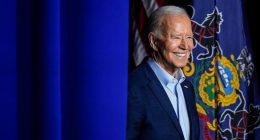

Reagan signed two National Security Decision Directive memorandums outlining an offensive against the Soviets, ranging from imposing licensing restrictions on drilling and pipeline technology to convincing the Saudis to drop the price of oil to foment anticommunist insurgencies in Poland, Africa, and Afghanistan.
VII. “We fed them a whole lot”
While Reagan’s NSC conspired to further weaken the Soviet economy, intelligence analysts spent months trying to develop a strategic approach to the intelligence provided by Vetrov, the disgruntled KGB official. A bureaucracy formed around tackling the problem. The CIA created a Technology Transfer Intelligence Center, where Galahad, Weiss’ collaborator, had a hand. Analysis of the intelligence provided by Vetrov found that, over a four-year period, the Soviets had stolen or illegally purchased 30,000 pieces of hardware and some 400,000 technical documents in the West. The Soviets had also gathered valuable intelligence on Western space war defenses and plans for a wide variety of military hardware. It wasn’t just military secrets, either. They pilfered machine tools, a high-accuracy 3D coordinate measuring machine, semiconductors, manufacturing techniques.
Weiss pored over the package of raw intelligence provided by Vetrov, known as the Farewell dossier. Weiss described the intelligence as “a dreary recital that droned on and on.” But the droning confirmed Weiss’ long-held suspicions of a Soviet infrastructure dedicated to stealing Western technology. For decades, the arms race had been a war of forced obsolescences, with each new weapons system rendering the previous iteration useless. The country that lagged behind became vulnerable to a first strike. The Americans believed they could spend the Soviets into submission. But all along the US had been in an arms race against itself.
The Farewell intelligence provided incredible detail about how a concerted Soviet effort, employing some 20,000 people, targeted, acquired, analyzed, and adapted Western technology. There were lists of agents in foreign countries and names and locations of Line X’s agents and their assets. According to an intelligence analysis, the Soviets consistently satisfied two-thirds to three-fourths of their annual collection goals, saving billions of dollars.
David Miller, a former intelligence analyst working for the Defense Intelligence Agency who studied Weiss’ work as part of an intellectual history of the National Security Council, told me that Weiss transformed this quandary into an economic problem, one that brought him back to his graduate studies. In Econ 101 terms, the Soviets were “fast followers,” disadvantaged competitors eager to replicate American innovation just to remain in the game. In the vernacular of Weiss’ doctoral thesis, the intelligence provided by Vetrov provided Weiss an opportunity to engage in a limited conflict, an avenue to change tactics and subtly escalate hostilities.
In January 1982, Casey summoned Weiss to CIA headquarters for a meeting. The director’s office was a mess of papers, strewn about at random. “No James Bond crystal decanters either, just coffee out of Styrofoam,” Weiss observed in his memoir. Weiss proposed using the Farewell shopping lists to supply the Soviets with the products they sought.
But Weiss wanted the gadgets altered, pre-improved so that they would eventually fail. “The scheme was so goober-pea simple that nobody had come upon it,” Weiss wrote of his solution. Even if the Soviets sniffed out the American trickery, Weiss wrote, “the stratagem would still work as the Agency’s Red Star clientele would be forced to test and retest each recalcitrant unit, provoking delays and finger pointing in the Center, its puffed up potentates sniffing a Gulag behind their next performance appraisal … Real fake devices, false fake devices … The Soviets had set themselves up in exquisite fashion.”
This plan to feed defective technology, which Weiss says carried the operation designation “Kudo,” existed as part of a larger government mobilization in response to the Farewell intelligence across the national security community. “It was multilayered operation,” Galahad told me. According to Galahad, Weiss didn’t hold any formal leadership role in this effort; instead, “Gus did his work through his own contacts. He was a White House guy. He could get people to pay attention to his ideas. He had friends in the computer business. He had Casey’s ear.”








